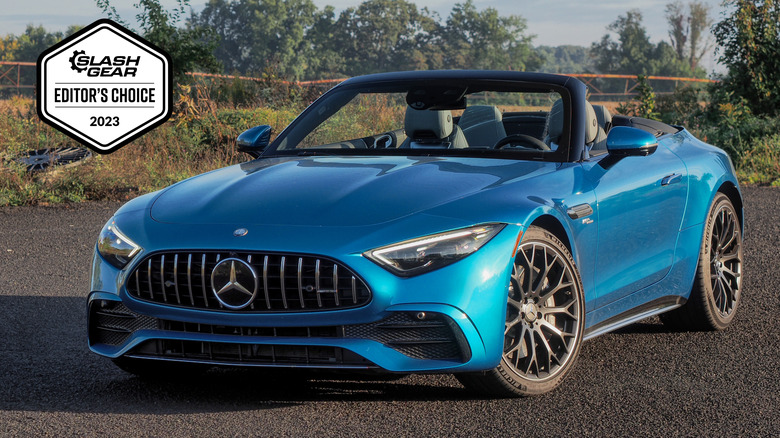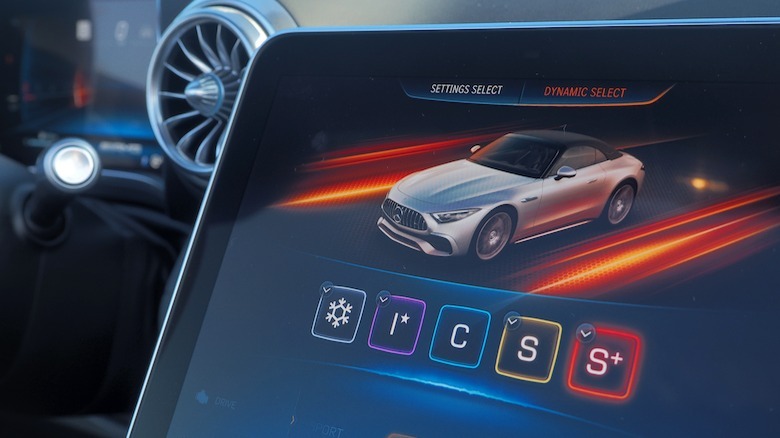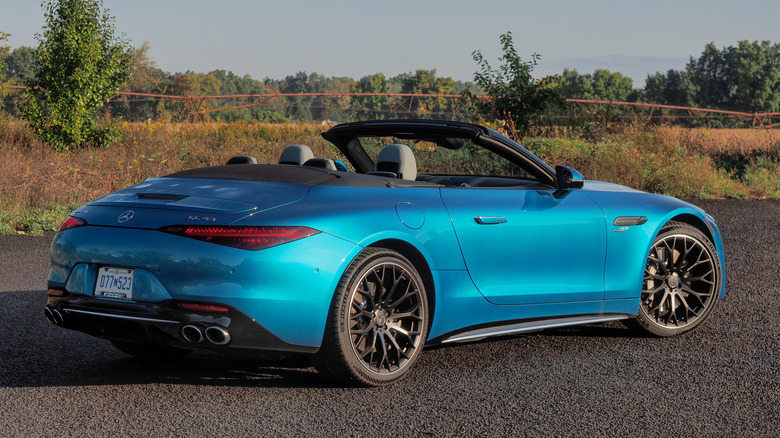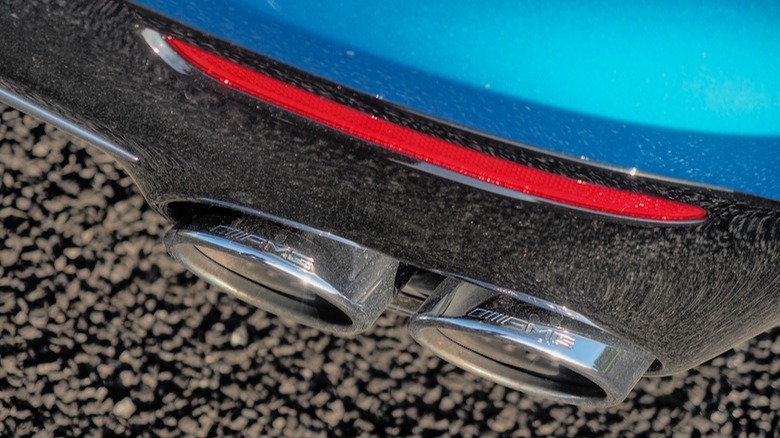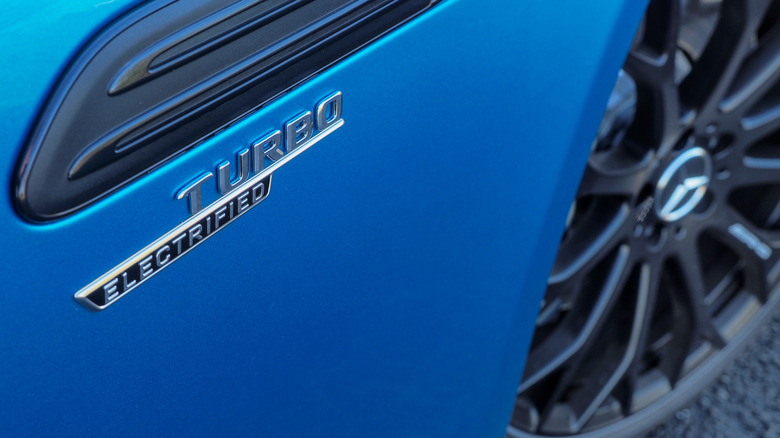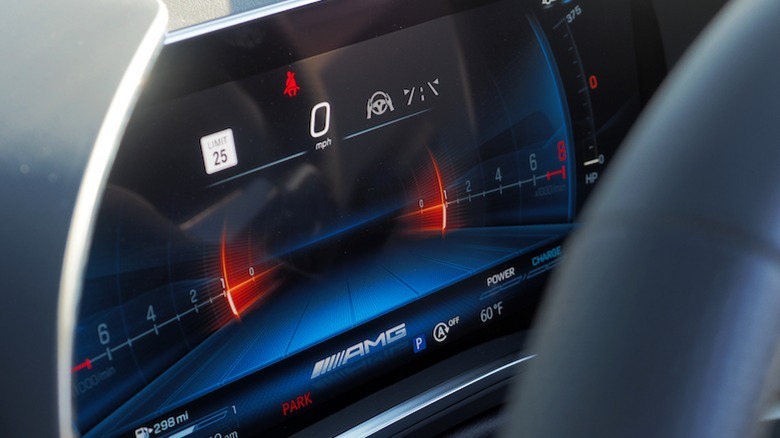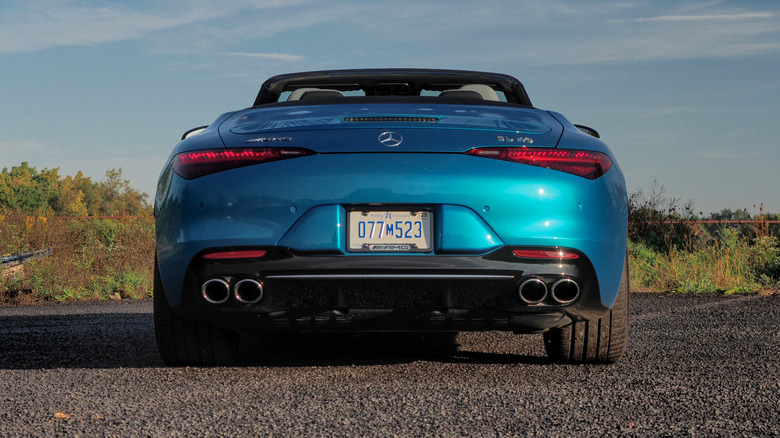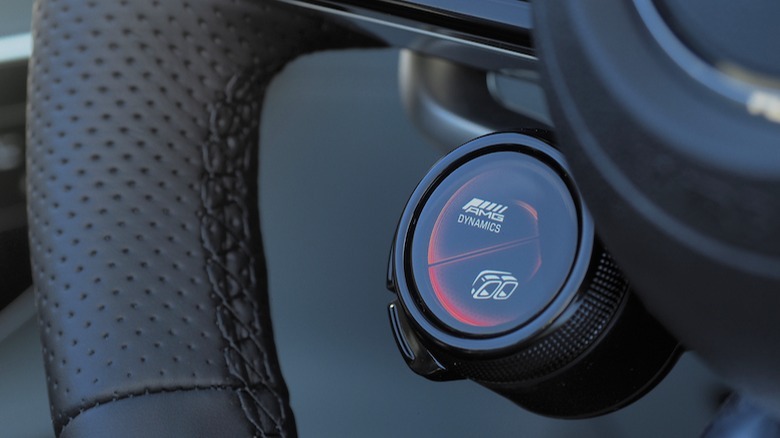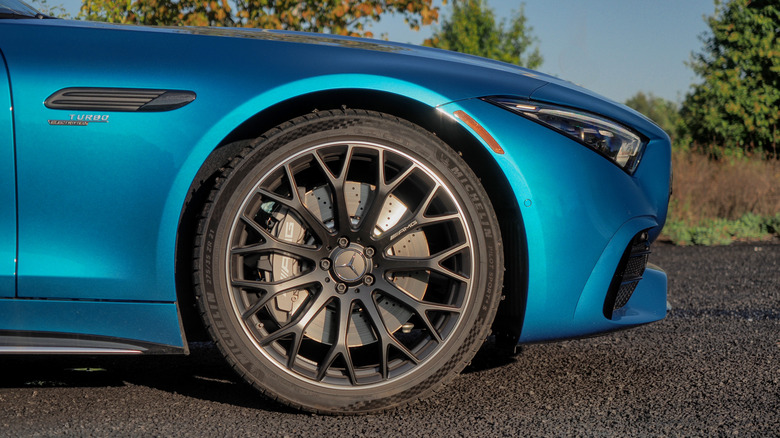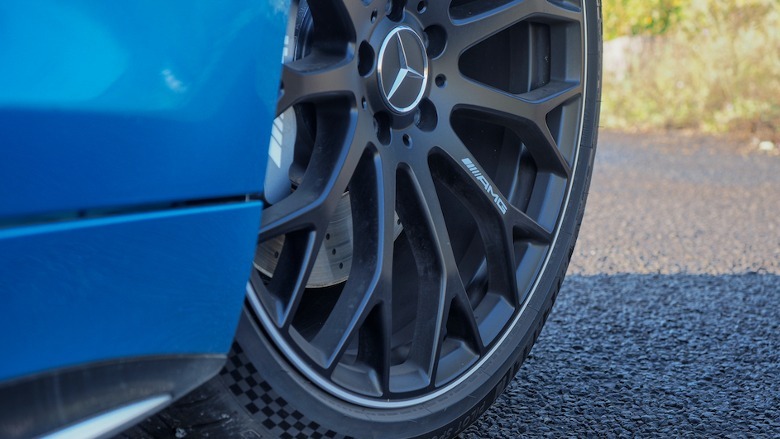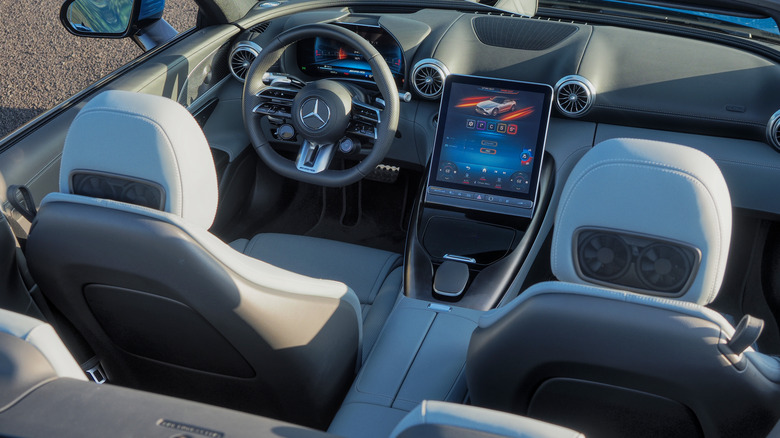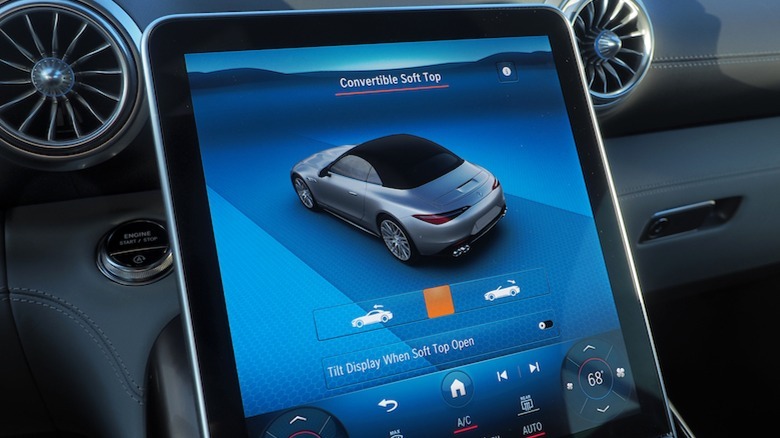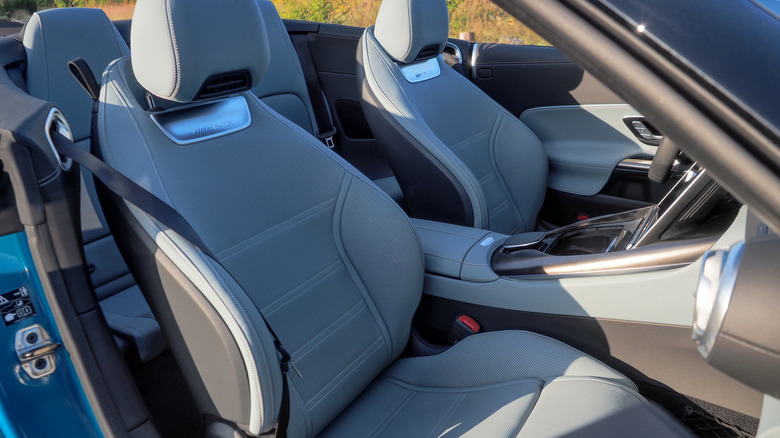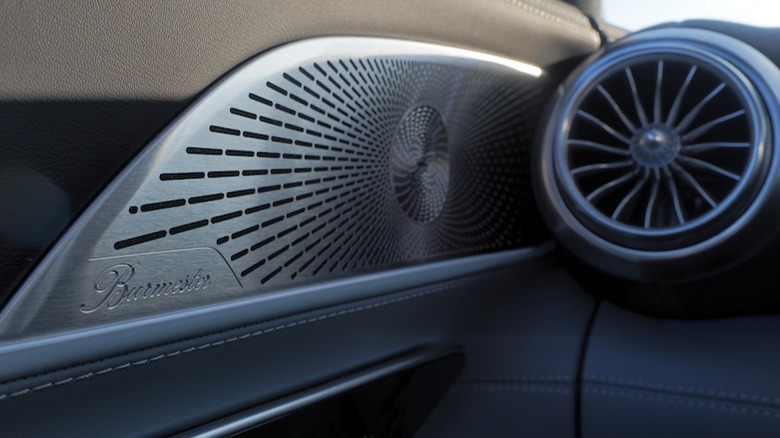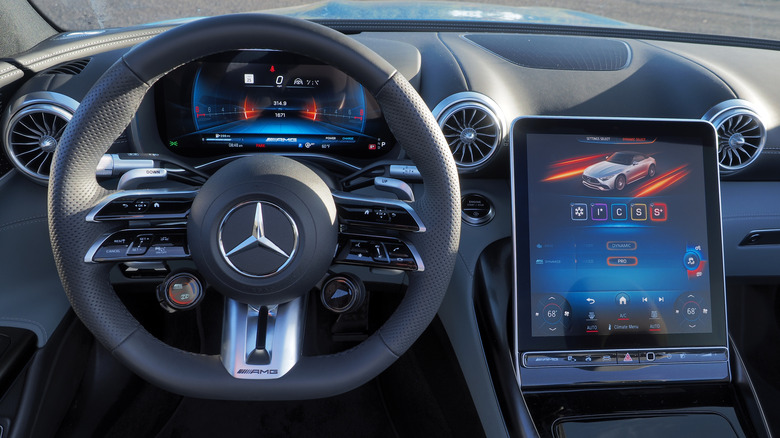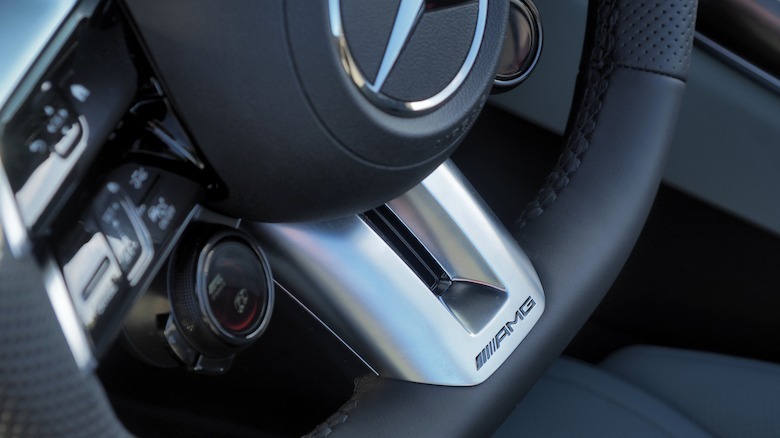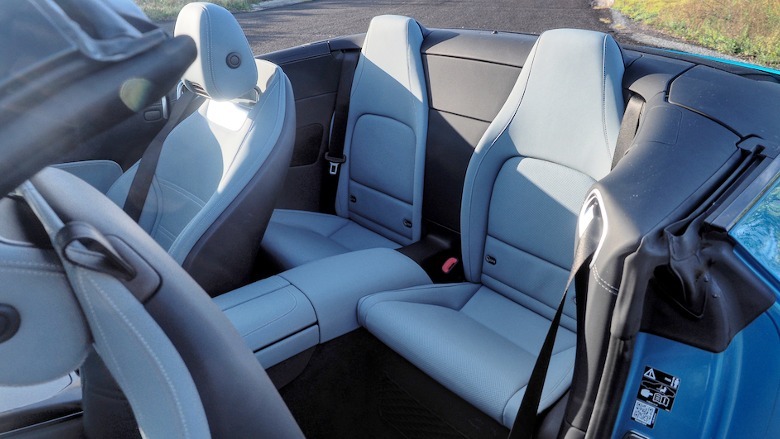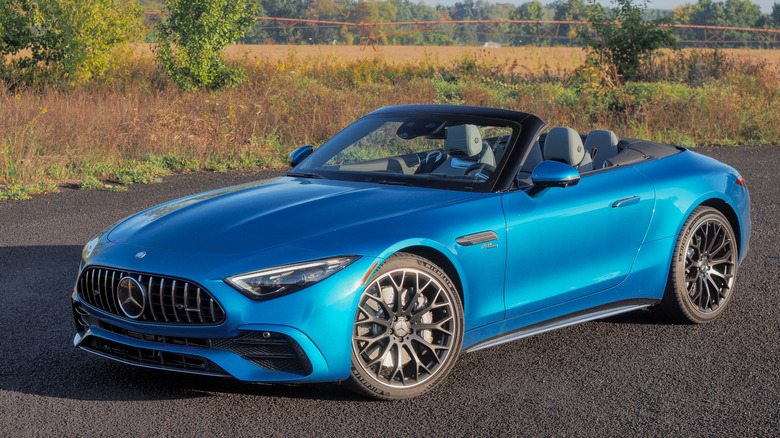2023 Mercedes-AMG SL 43 Review: Better Bar The Badge
- Classic roadster styling turns heads
- Electric turbo helps engine punch above its 2.0L capacity
- Well-equipped and comfortable cabin
- Playful dynamics benefit from lighter weight
- Impressive uptick in fuel economy
- High spec means you're still paying six figures
- Some frustrating controls
- Standard steel springs err on the stiff side
- You might want to debadge it
Mercedes-AMG has never felt more in reach. From its origins crafting Autobahn behemoths — from big 'Benzes to a distinct product line in its own right today — the AMG badge now punctuates all levels of potential Mercedes ownership. For those looking longingly at the latest Mercedes-AMG SL and wishing for a more attainable version of the sports convertible, a new, cheaper version can only be good news.
"Attainable," of course, is all relative. The 2023 AMG SL 43 may be the most affordable of the SL series, but it still starts at $109,900 (plus $1,150 destination). With extras, all-in, the handsome Hyper Blue Metallic example you see here is just shy of $120k. Certainly cheaper than the north of $140k you'd spend on an SL 55, but still putting the new roadster in direct competition with some of the best droptops from Porsche, BMW, and others.
Six figures is a lot to spend on sunshine and German engineering. Particularly if you're still only getting the entry-level SL version for that. The lingering question, then, isn't so much how good the newest AMG car is, but whether you'll feel short-changed despite all you're spending.
Two liters behind a 43 badge
Though the SL 43 nomenclature might suggest larger, there's a mere 2.0-liter turbo-four under the AMG's shapely hood. Then again, it's not like the digits on the rump have matched the engine for a while now in Mercedes land. The SL 55 and SL 63 both pack a 4.0-liter V8, for example.
It's not the first time we've seen four cylinders in an SL, though you'll need to go back to the 1960s for the last one. With 375 horsepower and 354 lb-ft of torque routed through a 9-speed AMG Speedshift MCT automatic transmission, you are, obviously, getting less grunt than in the biturbo V8 cars. The delta is less than you might guess, though.
The SL 55's eight cylinders net you 469 horsepower and 516 lb-ft of torque, good for a 0-60 mph time of 3.8 seconds. The SL 43 takes a second longer to do that run. Speed king is the SL 63, wielding 577 horsepower and 590 lb-ft of torque for a mere 3.5 second 0-60 dash.
An electric turbo is the speedy secret
Here's the thing, though. Of the V8 duo, the lesser-powered SL 55 was already arguably the better pick: the prodigious grunt of the SL 63 is simply unusable on regular roads. And while a 4.8 second 0-60 time may mean a shamefully lower rung on the Speedy Sports Cars rankings — the closest Porsche comparison, the 911 Carrera Cabriolet, does it in 4.2 seconds — it hardly reflects how most people will actually drive their boulevard cruiser.
Then there's the SL 43's secret weapon, its clever Hybrid Assist technology. An F1-inspired electric turbocharger, it takes its power from the 48-volt electrical system (that's also hooked up to the belt-driven starter-generator), using that to spin the turbo up initially before the exhaust gas flow takes over at higher engine speeds.
The result is an ousting of traditional turbo lag and a general sense of pep at lower speeds thanks to more low-end torque. It leaves the SL 43 feeling perky and agile around town but also has a huge impact on fuel economy. By tapping mild hybrid gliding, and smoother stop-start thanks to the 48-volt starter-generator, the 2.0-liter roadster is rated for 21 mpg in the city, 27 mpg on the highway, and 23 mpg combined. That's vastly improved over the SL 55's 13 mpg city, 21 mpg highway, and 16 mpg combined numbers.
Genuine rear-wheel drive fun
Make no mistake, for while it may be more frugal, the SL 43 isn't lacking in fun. There is a reason, after all, that rear-wheel drive sports cars are still prized. Though the absence of the 4MATIC all-wheel drive standard on the SL 55 and 63 may steal a little sure-footedness (and all-season usefulness), there are decided upsides to be considered, too.
Weight is a big one: the SL 43 tips the scales at 3,825 pounds, making it 353 pounds less than the SL 63. That obviously pays dividends for heft in the corners and general poise, but the rear-wheel drive SL also distributes its weight better: 52% front and 48% rear versus 54% front and 46% rear on the SL 63. While the AMG Performance 4MATIC+ system in the SL 55 and 63 can push all the power to the rear wheels if the situation demands it, you're still carrying all the hardware.
In Comfort mode, the SL 43 cruises with firm aplomb. There's still a pleasing gurgle from the engine — sounding, frankly, outsized to its actual capacity and cylinders — and the exhausts will bark gruffly if you lean into the gas. AMG doesn't offer air suspension here, with the SL 43 getting AMG Sport Suspension as standard. Its steel springs are dialed in on the stiff side but not obstinately so, keeping the roadster level in corners but not getting uncomfortably bumpy on poor-quality surfaces.
Tuned firmly, with flex an upcoming option
Flick over to Sport or Sport+ mode, meanwhile, and things get feistier. It may be the slowest in SL terms, but the combination of a responsive 375 horses in a lithe, low sports car pays dividends in smiles. AMG's F1-inspired electric turbocharger plays a significant role, aggressively bypassing turbo lag and leaving the SL 43 feeling spritely and eager. Factor in a little less heft over the front wheels, and the result is a car that actually hews closer to the sporting side of the SL equation than the Grand Tourer, power dip be damned.
Come the 2024 model year, the SL 43 will be offered with optional AMG Ride Control suspension. That will bring adaptive dampers into play, softening in Comfort and getting firmer in the Sport modes. Here's hoping, for those with lower back issues, the bigger differences are at the cosseting end of the scale since I'm not sure the SL 43 needs to be much stiffer.
There's no rear-wheel steer, which I suspect most people can live without, and AMG slices out some of the drive modes in its Dynamic Select system. Gone are the Race and Master options, and frankly that might be a good thing: by the time you add in the Snow and driver-customizable Individual settings, the SL 55 and 63 felt a bit mode-heavy. There's such a thing as too much choice.
Classic roadster style
Unchanged — and thankfully so — are the SL's gracefully elegant lines. There are plenty of recipes for success in automotive design, but a classic roadster's lengthy hood, shoved-back cabin, and truncated tail never really goes out of style. Factor in the choice of a dozen colors, including some tastefully bright red, blue, and yellow options, and you can't really question the aesthetics here. A few exterior tweaks distinguish the SL 43 from the others, but you'll need to be well-steeped in AMG design lore to spot them at first or even second glance.
Mercedes-AMG's decision to ditch the folding hard-top roof for this generation of SL continues to feel like a wise one. It may be a soft hood, but the multi-layer design still delivers on noise insulation. Dropping it takes a mere 15 seconds or so, though the weird "drag your finger on this touchscreen slider and hold it there" process of actually doing that feels needlessly convoluted.
Entry-level though the SL 43 might be, it still gets the comfort features of its more expensive siblings. That means the standard heated and ventilated seats also get Mercedes' Airscarf system, softly gusting warm air around your neck and shoulders. It's so nice, it almost feels like it should be inappropriate somehow.
The most coveted options are baked in
In fact, despite the base car billing, Mercedes-AMG has loaded up the SL 43 with most of the cabin creature comforts that the more expensive cars enjoy. That includes the 12.3" digital instrumentation cluster, 11.9" portrait aspect central touchscreen with motorized angle adjustment to avoid glare when the roof is down, ambient lighting, a wireless phone charger, and the lovable Burmester Surround Sound audio system. Some of those are popular options on lesser Mercedes which would add thousands to the final sticker, and AMG has opted to make them standard here rather than chase a five-figure starting price that would inevitably spiral up quickly anyway.
Mercedes' infotainment display always looks large, but positioning it so close to the driver makes it easy to reach out and hit on-screen buttons that can feel a stretch in more spacious cabins. Wireless smartphone connectivity and multiple USB-C ports are welcome, and this latest iteration of MBUX features a capable "Hey Mercedes" voice interface and a crisp and responsive UI.
Four seats, but only two are really usable
The same can't quite be said for the double-spoke steering wheel, and its array of touch-sensitive controls. Trying to swipe up and down for granular volume or cruise control speed adjustments is a recipe for jerky frustration. Far better are the two circular control pods hovering underneath, which make cycling through the various AMG drive modes and settings a doodle.
$1,100 adds a head-up display — neat, but not necessary — while $1,950 gets you the Driver Assistance Package. Considering that's what brings Mercedes' adaptive cruise control with lane-keeping and lane-change assistance, active blind spot assistance, and other safety features like brake assistance with cross-traffic support, it's an option that should probably be on every order sheet.
Officially, the SL is a 2+2. In practice, that "+2" better be scaled like infants, puppies, or Hermès handbags if they're to squeeze into the AMG's dinky rear seats. Legroom is the most pressing issue — pun intended — but anybody bigger than a child will probably find their head sticking up uncomfortably into the airflow over the windshield. Far better to consider it all just extra storage space, augmenting the 7.5 cu-ft of trunk capacity.
2023 Mercedes-AMG SL 43 Roadster Verdict
Honestly, it feels like the biggest thing you're missing out on here are bragging rights. Regardless of how capable and fun this particular AMG is, for sports car enthusiasts in the know, that SL 43 badge on the trunk is an undeniable sign that you went for the base version, the dinkiest engine. It could, in certain quarters where size still rules, be considered a sign of being cheap.
Setting aside the ridiculousness of what's still a six-figure convertible being deemed "cheap," it would be naive to entirely dismiss such judgments as beyond the point. After all, a car like the SL is as much an aspirational and demonstrative indicator of wealth and success as it is a method of transportation or a backroads plaything. It's impossible to divorce it entirely from image.
Maybe, then, the best way to deal with any prestige shortfall in the Mercedes-AMG SL 43 is the same way of dealing with relationship divorce: that is to say, memory-holing it completely. In the case of the roadster, that's a comparatively straightforward exercise in debadging. SL buyers probably only wish their ex-spouse was so easy to forget, but a refined and playful roadster is at least an excellent distraction.
